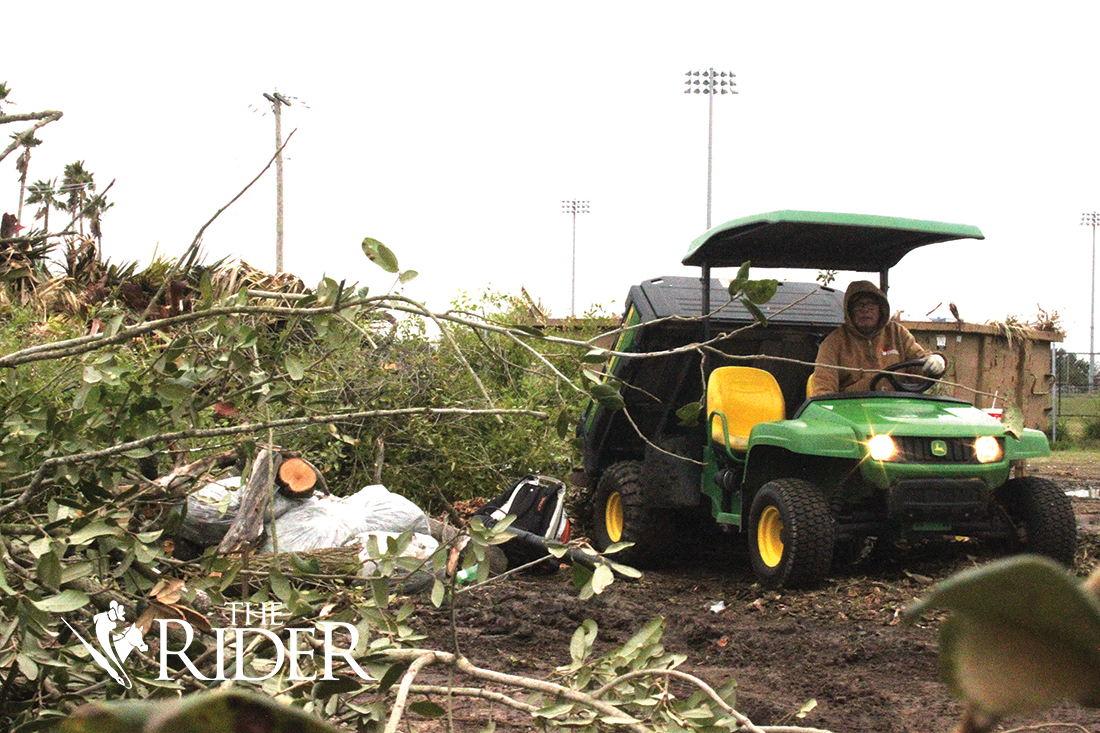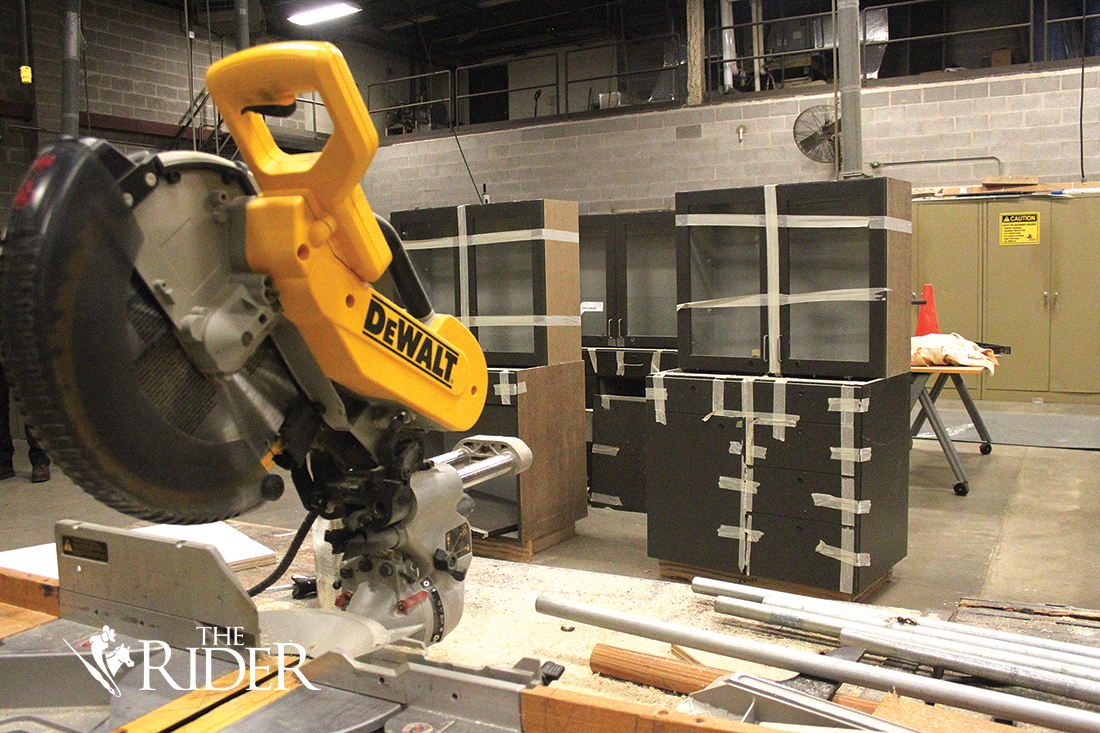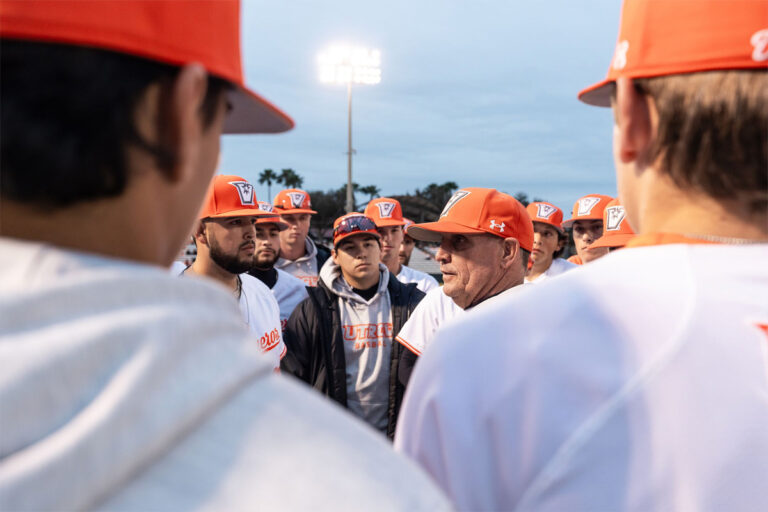
Last in a series: Recycle, reduce, reuse
Although the university does not have an official recycling program, departments contribute to the reuse of materials and waste in an effort to reduce on campus.
Carlos Chavez, UTRGV assistant director of program and services for Campus Facilities Operations in Edinburg, said they try to reuse whatever they can. One of the ways Facilities does this is by reusing cabinets when an office or department no longer needs them.
“There’s a lot of places on campus and when they do renovations, a lot of times they pull some of those old fixtures because they want some new cabinet or anything like that,” Chavez said. “So when they do, the cabinets that they remove, they actually don’t throw them away. They bring them over here to the physical plant and then they resurface them again, repaint them, change anything on the hardware that needs to be changed and then they’ll go ahead and use them in any other places that they do.”
Facilities even has a locksmith on hand to make new locks for the recondition and as many keys needed for them.
“It doesn’t become a new purchase of something new because you already have it, you just recondition it so it looks like new,” Chavez said.
He said this is ongoing since departments across campus are always getting renovated.
Facilities also reuses parts of equipment that has broken down.
“If there’s some usable parts that we can still use for any of the other equipment, then what we do is evaluate each one,” Chavez said, adding that some parts are kept to fix other equipment that might break.
Another way Facilities tries to reduce waste and expense is by chipping trimmed tree branches and reusing it as mulch.
“Depending on how many inches thick is the branch, we have [a chipper] that breaks it down,” he said. “It breaks it down to smaller pieces of wood that we can go ahead and reuse on the beds on campus when we do replanting or anything like that. And then that saves us money.”
Chavez said the grounds crew trims an average of 50 trees per week and has two chippers.
The crew members use the mulch in replanting or when they notice flower beds need more mulch.

The chipper allows for branches no thicker than 3 inches. Anything more will damage the equipment. This doesn’t stop Facilities from finding ways to reuse bigger branches.
“Every year we do a Christmas lunch/dinner and we’re a little bit over 200 employees, so some of that wood we actually save because we barbecue with it, so that keeps us from buying it,” Chavez said.
Facilities also gives large branches to students who request them for school projects.
Surplus
Abraham Hernandez, UTRGV director of Campus Facilities Operations in Brownsville, said he is in charge of surplus pickup that is then taken to a warehouse on campus.
The items stored are kept there until needed by the university or until they are auctioned.
If a department wants furniture, it can schedule a visit with Central Receiving, look at the items, tag them, make arrangements and then Facilities will deliver them where needed.
“As part of our normal practice, whenever we take anything apart we try to reuse whatever items are still good just to reduce our cost,” Hernandez said.
Asked if Facilities has any plans to implement a program that would make it easier to reuse waste, he replied that when the department implements a recycling program, the majority of the materials reused are going to be recycled.
“I guess the recycling program is going to take advantage of that because the items are going to be recycled,” Hernandez said. “In regards to the campus reusing the items, it’s like I mentioned, if a department no longer needs a particular item, then it is picked up. It is not typically disposed of. It is picked up and moved in to the surplus warehouse to try to be reused.”
Jose Davila, the Central Receiving supervisor in Brownsville, said items the department recycles are boxes, cardboard and pallets.
Davila is also in charge of surplus. He said surplus is an area in which furniture is kept to be reused by the university.
“Let’s say there’s a department low in budget,” Davila said. “They don’t have in their budget to buy a new couch, a new chair, or, you know, a desk, anything that is in regards to an office. I mean, we keep our inventory available for the university so they can reuse the old furniture that is not being used for other areas.”
The department also stores printers, computers, monitors or any electronics that may be useful for the university in the future.
Davila said staff separates surplus into three areas: items to be auctioned, to be reused or project furniture.
“Project furniture is where people will go and look for their furniture and they’ll hold it,” he said. “When [the university opens] a new building, instead of buying all the furniture, they can reuse the same. … Like if you’re looking for a chair, an extra chair, an extra table, you can go get it from there. And, we also have that auction furniture. That auction furniture is the old furniture that, maybe, is missing a little wheel or has a little scratch, or you know, and it’s something that is very old and nobody is going to use it on campus. So that area is designated to have an auction.”
Davila said that by reusing materials instead of disposing of them, it helps the university save money.
Environmental Health, Safety & Risk Management is charged with picking up regulated waste streams, which include hazardous waste and universal waste such as oil, paint, antifreeze and batteries, according to the department’s director, Richard Costello.
“We do it two ways,” Costello said. “There’s a waste line called waste@utrgv.edu or if they generate large quantities, we put containers in their areas and those are for the waste streams that are generated on campus.”
He said that if anybody generates these kinds of wastes at home, they can drop them off at the campus safety offices.
The majority of items generated come from auto shops and laboratories. They are collected by the department and disposed through a contractor, Veolia. Oil and antifreeze are automatically recycled while paint is mixed.
“Paint is basically all combined in one container and sold, because when you mix all the paint it becomes gray paint,” Costello said. “So, what it does is it takes the gray paint, OK, and then it’s basically sold as gray paint. In a lot of cases, what they do is they mix it with an epoxy so you can paint your garages.”
For laboratory waste streams, they are first looked and kept if they can be reused.
“If it’s a flammable material, what it can be used [as] is actually a fuel, an input fuel into a hazardous waste incinerator,” he said. “The other waste streams that are not recyclable, they’re generally incinerated.”
Costello also said fluorescent light bulbs are picked up but they cannot be recycled. So they are used in asphalt.
“It costs more to recycle, but the institution’s mission is to be sustainable,” he said. “With that mission, what we do is we basically direct all of our waste streams towards recycle or reuse, so we pay a little bit extra but that extra is basically affordable because we try to protect the environment.”
Professor’s suggestion
Amy Hay, an Environmental Studies program coordinator, said reusing waste that is produced from the cafeteria to create compost would be a great idea.
“If we had some space where they could use it to create mulch … you actually have to have space to do it and then use it for our gardens on campus,” Hay said.
She has started to notice that professors will leave out books, binders and folders to get them reused by someone instead of going straight to the trash.

“They put folders and binders out so students can, hopefully, take them and not have to pay five bucks at Staples,” Hay said.
One way she tries to implement sustainability in her own classrooms is by switching her semester project from cardboard to digital display.
“I used to have students do displays for their semester project,” Hay said. “The only problem was that they would be up for maybe two hours.”
By switching to digital platforms for their semester project, it eliminates the need for students to buy cardboard and ultimately reduces their waste.
Student efforts
Carolina Pérez, a theatre junior, said her family tries to reduce their waste in many ways, including using cloth napkins instead of paper napkins.
Here on campus, Pérez said the theatre department tries to be as mindful as possible in regard to how it recycles, reduces and reuses.
“Recently, we needed to fix one of the puppets that we were using for our puppet walk, and instead of buying more paper, I was walking around, and I actually saw old newspapers,” she said. “I was like, ‘I’m going to take these and use them for the [puppet].’”
Ariael Ortiz, a graphic design sophomore, said she has been reusing items for a long time and tends to reuse plastic bags.
“We reuse them as regular trash bags or we use them to carry stuff around,” Ortiz said.
She also reuses Clorox bottles to put water in cars, coffee containers to store salt or sugar, water bottles and Ziploc bags.
Ortiz said she does not have a recycling bin at home and, therefore, does not recycle at home.
“Reuse,” she said. “When it comes to littering, when you throw away food, like, let’s say an apple … into the environment, it does decompose and it makes compost for trees and plants.”
Kyle Jacinto, a graphic design junior, said he reuses old clothes by turning them into rags to clean around the house and also recycles plastics and cans at home.
“With food scraps … we just collect them in a bowl and bury it so it can decompose,” Jacinto said.
He also gathers leftover coffee grounds and tosses them in the garden.
“Not only do you provide nutrients for the soil, but it will leave a very nice coffee smell,” Jacinto said.





